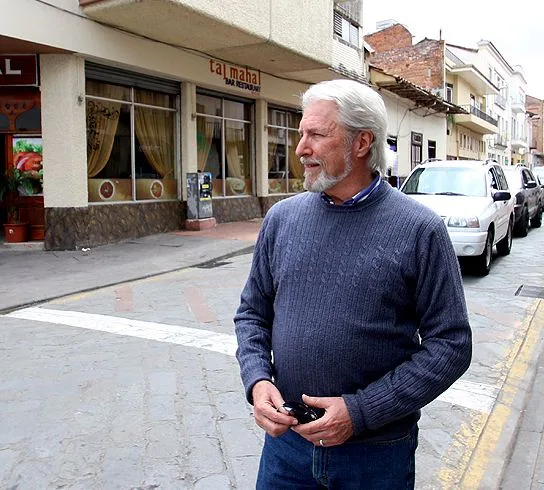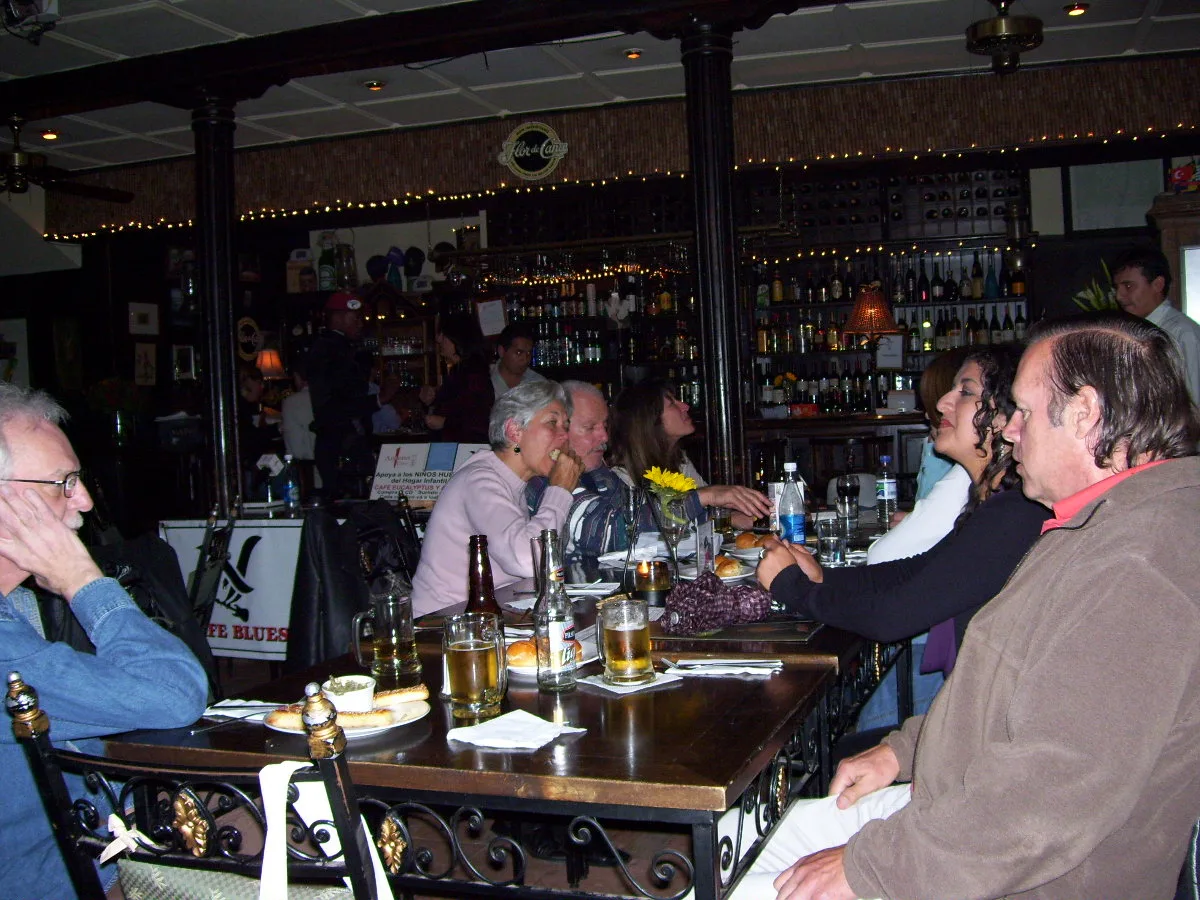A long-time resident looks at the evolution of Cuenca’s expat community and predicts its future
By John Keeble
Cuenca’s expat community, perhaps the world’s first to be built primarily by the Internet, has come of age — it has grown and changed from a few hundred adventurer-expats in the pre-boom years to a large population enjoying a retired lifestyle of good public amenities, a strong support network, and a growing number of entertainment options, including an ever-expanding assortment of restaurants, cafés and bars.

David Morrill in El Centro. (Photo by John Keeble)
The explosion of interest in Cuenca can be pinpointed to September 2009 when International Living ranked the city as the world’s No. 1 expat retirement location, a designationtion that was quickly repeated by websites, television networks, and print outlets in North America and Europe.
David Morrill, editor of CuencaHighLife, was one of two International Living (IL) correspondents, along with Lee Harrison, writing about Cuenca and Ecuador at the time.
“We’ve been blamed, or credited, however you look at it, for bringing a bunch of gringos to Cuenca and that was never our intention,” Morrill says. “We were writing good things about a town we liked and had no idea IL was planning a ranking.”
Through its magazine and website, IL advised potential retirees that they could live “like kings” on a modest income in Cuenca while enjoying good quality infrastructure and health care. It rang the bell for many “Baby Boomers” looking for a good retirement. “The hyperbole flowed fast and furious and attracted a lot of folks,” says Morrill, who left IL shortly after the hard-sell began.
No one knows how many expats came, how many stayed, or how many tried the expat life and left in the “turnstile” of comings and goings. But the latest United Nations-City of Cuenca socioeconomic report on migration indicates the number is in the thousands and that new expats continue to arrive.
The boom not only dramatically increased the number of expats, it also produced a radical change in the nature of the expat community.
“When I came here in 2003, the expat scene bore little resemblance what it is today,” says Morrill. “Besides the handful North Americans and Europeans married into Ecuadorian families, the new arrivals tended to be entrepreneurs, fugitives of various types, treasure hunters, and spinners of tall tales, with a fair number of folks you can only describe as international vagabonds. And it seemed like everyone back then was looking for love.”

“Gringo Night” in 2007: Sharing beer and tall tales.
While today, Morrill says, expat conversations are more likely to focus on the grand kids back home or the cheese selection at Supermaxi, in the early 2000s they tended to gravitate toward grandiose exploits. “There was a diamond merchant, newly arrived from Malaysia, putting together a search team for lost Inca gold,” Morrill said. “He actually carried a dog-eared treasure map in his pocket. And then there was a couple of guys who were planning to get rich designing and selling leather goods for world travelers — they’re long-gone but I still have my Indiana Jones and Eisenhower jackets.”
Today, the larger, older and more “domesticated” expat community has developed a network of services and activities to make life easier and more comfortable for foreigners.
“The change is mostly good,” said Morrill. “The adventure is still out there if you want it but the size and age of the community brings so many more options than we had ten or 15 years ago. There’s theatre and writers groups, poker, dance and cooking clubs, knitting and cancer support groups, even AA meetings for the adventurers who overdid it.”
One of the most conspicuous changes over the years, says Morrill, is the increase of dining options. “In 2003, you had your choice of comida tipica or a couple of Italian restaurants,” he says. “Today you can find almost anything you want.”
As Cuenca’s expat community has grown, it has also polarized into discrete groups: an overwhelmingly large retired element; young language students and backpackers who’ve decided to stay for a spell; and younger working people, some with families. The elements tend to stick to their own, says Morrill. “You don’t see a lot of inter-generational mixing,” he says. “In fact, a lot of older gringos don’t even notice the trend of the younger expats moving in.”
Although the Internet and print recommendations for dream expat destinations have moved on to new possibilities, Morrill thinks Cuenca will remain an attractive destination. “Because of the number of expats already here, there’s a critical mass that attracts new expats, mostly by word-of-mouth. I think there will be a gradual decline in the number of North American retirees, but they will be replaced by other groups, including younger gringos.”
He adds that he recently met a Chinese “facilitator” who helps Chinese families relocate to Cuenca.
Cuenca will continue to attract expats for a wide variety of reasons, Morrill believes. “Most important, is that it’s simply a good place to be.”





















